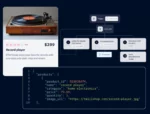As are other SharePoint administrators in the enterprise, my support team is preparing for the impending transition of our customer base to SharePoint 2013. It is not currently known if the adoption pattern and rate will be similar to previous releases or if this product release’s adoption will be married to the success of Office 2013 or Windows 8.
What is recognized is that Microsoft is clearly stepping away from server-side code and is also upping its game with enhancements to the SharePoint Online offering.
As a SharePoint administrator, it is significant to provide consultative assistance for the stakeholders and decision-makers during the process to determine if and when migration to SharePoint 2013 is to occur. During this process, it’s important for the administrator to have a firm grasp over the technology to understand the direction that Microsoft has taken. An important point is that this new SharePoint also comes with a set of higher hardware requirements. You will see that the memory requirements for SharePoint Server are like taxes: They go up.
Another aspect of the transition is understanding the features that are now available to developers and information workers. Microsoft has provided documentation with a product matrix to detail the edition and plan differences with SharePoint 2013 on prem and SharePoint Online.
Microsoft is currently producing a wealth of documentation around SharePoint 2013, seemingly more than in any other previous release. My recommendation is to follow the release of these articles by following the RSS feed.
John Denman is a consultant with SharePoint911, a Rackspace company.





